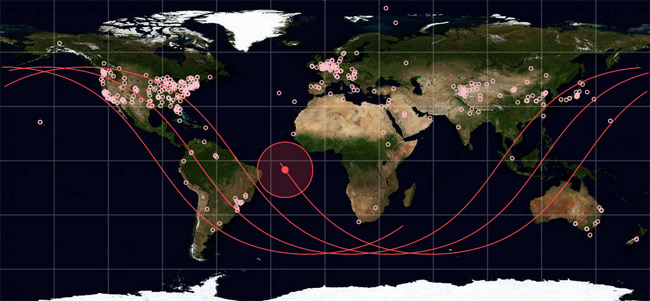NASA launched three smartphones into orbit

Modern smartphones have reached the level of performance and reliability when they can already be used in space projects. At least, this is what the agency NASA, which designed the three experimental satellite PhoneSat satellites running ordinary Nexus One smartphones, thinks so. From Sunday, these smartphones circle in an inclined orbit at an altitude of about 240 km.
The cost of spacecraft is a ridiculous amount from $ 3,500 (two satellites PhoneSat 1.0) to $ 7,000 (PhoneSat 2.0), the volume of each satellite is about 1 liter (10 × 10 × 10 cm).
On April 21, three satellites successfully entered orbit , since then hundreds of radio amateurs around the world have confirmed reception of the signal at a frequency of 437.425 MHz.
')

Coordinates of noted radio amateurs and current coordinates of satellites
The Graham and Bell satellites PhoneSat 1.0 broadcast a signal every 28 and 30 seconds, respectively, and the satellite Alexander (PhoneSat 2.0) - every 25 seconds. All satellites transmit a signal using frequency modulation (1200 baud data transfer rate), using the AX.25 data link layer protocol with vertical linear polarization of waves.
Devices such as PhoneSat belong to the category of "nanosatellites". Variant PhoneSat 1.0 weighs about 1 kg.

Satellite PhoneSat 1.0 next to the cup
The NASA pilot project is designed to check whether smartphones will withstand cosmic radiation, whether microchips will fail.
If the satellites give a good account of themselves, then conventional serial microcircuits can also be used in real practical problems. For example, to control photo and video of the earth's territory.
Source: https://habr.com/ru/post/177903/
All Articles